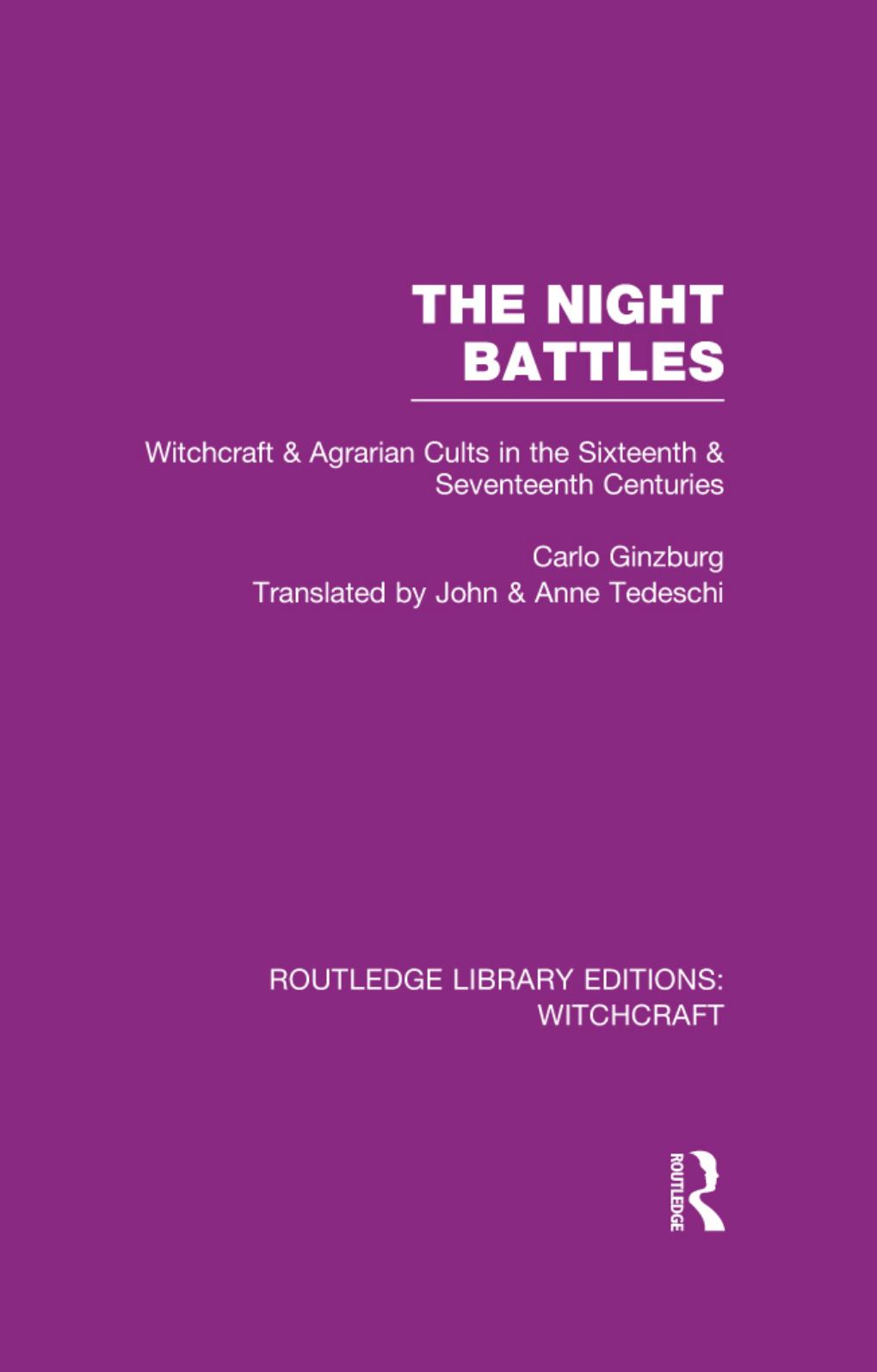The Night Battles: Witchcraft and Agrarian Cults in the Sixteenth and Seventeenth Centuries by Carlo Ginzburg

Author:Carlo Ginzburg [Ginzburg, Carlo]
Language: eng
Format: epub, pdf
Tags: history, Europe, General, Historiography, Renaissance, BODY; MIND & SPIRIT, witchcraft
ISBN: 9781421409924
Google: jR9nAQAAQBAJ
Publisher: JHU Press
Published: 2013-10-15T23:57:55.387261+00:00
4
Even with its contradictions, Sionâs account of the sabbat on the whole closely resembled the picture furnished by all the demonological treatises. This similarity was remarked upon, with a mixture of astonishment and honest intellectual satisfaction, by Don Pietro Martire da Verona. At the beginning of Mayâonly a few days after the first interrogationâthe inquisitorâs vicar had asked him to have Giovanni Sion sent to Udine. Since Don Pietro did not have anyone who could accompany Sion just then, he had lodged the benandante briefly in his convent. âWe tested him quite thoroughly here in the monastery the last few days,â he wrote to Fra Ludovico da Gualdo on 11 May, âand during this time he made many willing efforts; and it amazes me more and more how the things which he says occurred resemble what is in the books. He does not omit anything, and what he tells once he tells unchanged all the other times.â To obtain this correspondence with the âbooksâ, it had taken more than a half-century of effort on the part of inquisitors, confessors and preachers (to limit ourselves to the clergy who, indeed, had played a leading role in this endeavour to make popular beliefs conform to the corresponding formulations of the educated classes); now the end of the process had almost been reached.
To be sure, Sionâs claim that he had been present at the sabbat not merely in a dream, but in reality and physically, posed new problems for the inquisitors. The interrogations of those whom Sion had accused of being benandanti and co-participants in the sabbat began on 10 May. All, however, unfailingly rejected Sionâs charges, while he, in turn, retracted nothing. There were some dramatic moments in their confrontation: addressing Giuseppe of Moimacco, who was continuing to deny that he had been at the sabbat, Giovanni Sion exclaimed: âHasnât Gerolamo of Villalta taught you to recite the Pater Noster backwards, as he also did to me?
There is no need to deny it because unfortunately it is true, and I would that it was not so.â15 But neither Giovanniâs harangues nor the inquisitorâs threats extracted from the accused an admission that they had participated in the sabbat. Even the discovery of two scarsâor, as Sion insisted, two diabolical stigmataâon the bodies of two of the three peasants thus confronted, had no effect. The two were imprisoned, while Sion was again freed but with the obligation to keep himself at the disposal of the Inquisition.
From this moment the trial took a new turn. Fra Ludovico da Gualdo began an investigation of one of the witches accused of a murder by SionâGrisola of Cividale. It came out that many suspected her of having committed crimes and witchery, but nothing more specific than that. Before long, however, the interrogations were halted and the inquisitor, due to the numerous irregularities and lapses in the procedure followed up to that point, decided, with the patriarchâs concurrence, to take personal charge of the trial and proceed to Cividale to re-examine the witnesses.
Download
The Night Battles: Witchcraft and Agrarian Cults in the Sixteenth and Seventeenth Centuries by Carlo Ginzburg.pdf
This site does not store any files on its server. We only index and link to content provided by other sites. Please contact the content providers to delete copyright contents if any and email us, we'll remove relevant links or contents immediately.
| Africa | Americas |
| Arctic & Antarctica | Asia |
| Australia & Oceania | Europe |
| Middle East | Russia |
| United States | World |
| Ancient Civilizations | Military |
| Historical Study & Educational Resources |
Machine Learning at Scale with H2O by Gregory Keys | David Whiting(3668)
Never by Ken Follett(3550)
Fairy Tale by Stephen King(2976)
The Man Who Died Twice by Richard Osman(2824)
Oathbringer (The Stormlight Archive, Book 3) by Brandon Sanderson(2666)
Will by Will Smith(2595)
Rationality by Steven Pinker(2160)
The Dark Hours by Michael Connelly(2094)
The Dawn of Everything: A New History of Humanity by David Graeber & David Wengrow(2025)
Friends, Lovers, and the Big Terrible Thing by Matthew Perry(2018)
Can't Hurt Me: Master Your Mind and Defy the Odds - Clean Edition by David Goggins(2012)
Principles for Dealing With the Changing World Order: Why Nations Succeed and Fail by Ray Dalio(1909)
HBR's 10 Must Reads 2022 by Harvard Business Review(1704)
A Short History of War by Jeremy Black(1679)
Go Tell the Bees That I Am Gone by Diana Gabaldon(1603)
515945210 by Unknown(1526)
443319537 by Unknown(1400)
Kingdom of Ash by Maas Sarah J(1400)
A Game of Thrones (The Illustrated Edition) by George R. R. Martin(1377)
